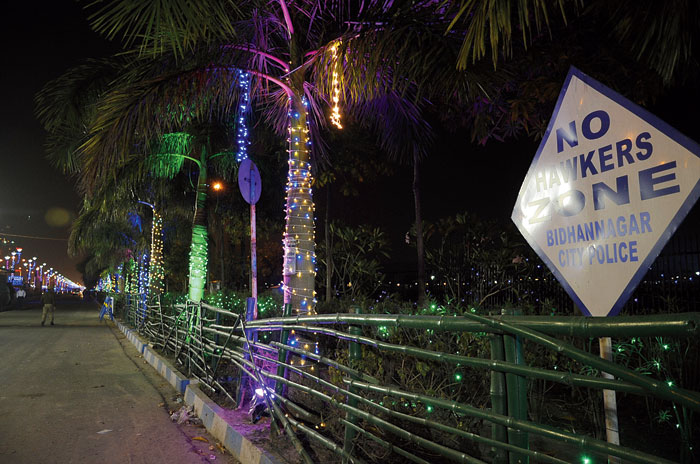Eco Park lights will be turned off at night after it shuts down for the day so that birds and animals that have made it their home are not disturbed by the glare.
Apart from shutting down the lights, the roads around the park will be declared “no-honking” zones, an officer of Housing Infrastructure Development Corporation (Hidco) that maintains the 480-acre park in New Town said.
Metro had reported on May 11, 2018, that a survey conducted at the park had found fishing cats, more than a dozen species of birds, around 100 varieties of butterflies and several species of rodents and insects.
A recent report submitted by the West Bengal Biodiversity Board has listed several guidelines to Hidco to safeguard the environment and the habitats of the animals and the birds that stay there, the official said.
The report has recorded the presence of at least three mammals, including the fishing cat, more than 24 varieties of birds (many of them migratory) and 131 species of insects and over 100 varieties of butterflies at the park.
More than two dozen varieties of birds, including the stork billed kingfisher, white-bellied woodpecker, Bengal bushlark, Malabar whistling thrush and striated blabber, have been spotted in the survey.
There have been sightings of black bittern, cinnamon bittern, plaintive cuckoo, striated grassbird and the pied cuckoo at the park as well, a Hidco official said.
He said there were several types of lights installed at the park and those would be switched off after the park closes for visitors.
This will make the environment more conducive for the birds and animals there, he added.
Debashis Sen, the chairman-cum-managing director of Hidco that runs the park, said apart from switching off the lights, signboards would be put around the park to notify it as a “no-honking” zone.
“We have planted more than 300 varieties of trees and plants and want to make the park as friendly for animals as possible. We are also creating roosting spots for birds in New Town and Rajarhat using dead branches,” said Sen.
The survey has found a rich variety of flora and fauna in the park. The park’s 112-acre water body has more than 17 species of fish. While more than 50 deer are housed in a 12-acre enclosure near the park’s gate number 6, the fishing cat, which is Bengal’s state animal, lives around the water body, a forest official said.
Subhankar Patra, a member of SundayWatch that organises regular bird-watching trips in and around
Calcutta, said that it was a great idea to turn off the lights at night and reduce noise around the park.
“Bright lights are bad for both nocturnal animals that hunt or forage for food at night and diurnal animals or birds that are active during the day. While the lights fool the nocturnal beings into thinking that it is still day, those that are active during the day cannot rest properly at night,” said Patra.
According to him, they had spotted at least 150 different species of birds in Eco Park, Rajarhat and its adjoining areas throughout the year.
“It is a fascinating landscape. The sheer variety of birds found here are generally not seen elsewhere within the city limits,” Patra added.
The forest official said that the fishing cat thrived in wetland areas, swamps and marshy areas and the 112-acre water body provided a perfect place to stay for the animals that predominantly preyed on fish, frogs, crabs and generally became active at night.
Fishing cats are extremely shy animals and slink away at the bright lights, the sight and smell of humans, he said.
The park also has a rich collection of trees that includes Burmese pink cassia, bakul, fern leaf tree, yellow bottle brush and the much coveted red sandalwood tree also known as red sanders. Red sandalwood trees are highly valued for the rich red colour of their wood.
The park also has 62 varieties of fruit trees such as mango, banana, grapes and pomegranate among others.
More than 100 varieties of butterflies are also found at the park and have been recorded in the survey. Some of them include the blue mormon, commander, lemon pansy, blue pansy, grey pansy, common leopard, mormon, lime butterfly, common rose, tailed jay.











